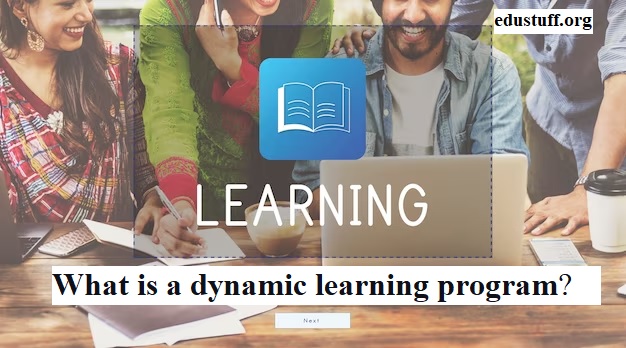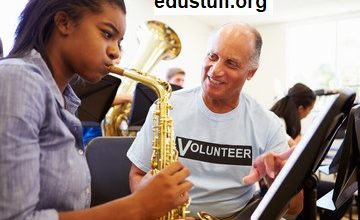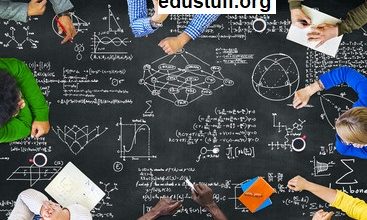
What is a dynamic learning program?
Dynamic learning programs (DLPs) represent an innovative approach that’s rapidly gaining traction in education, revolutionizing the traditional paradigms of teaching and learning. These programs are designed to engage learners actively, fostering a more interactive and personalized educational experience.
The surge in interest surrounding DLPs stems from their profound potential to revolutionize education. They are catalysts for change, offering a departure from passive learning models by promoting active participation, collaboration, and critical thinking among students. This approach not only enhances academic performance but also cultivates vital skills crucial for success in the modern world.
Key features of DLPs include:
- Their adaptability to different learning styles.
- Integration of technology for immersive experiences.
- Emphasis on real-world applications.
- The fostering of a student-centered environment.
These programs are designed to cater to diverse learners, empowering them to explore, inquire, and create knowledge actively.
In essence, DLPs represent a groundbreaking approach that transcends conventional teaching methodologies, holding the promise of transforming education into a dynamic, participative, and highly effective endeavor.
What is a Dynamic Learning Program (DLP)?
Dynamic Learning Programs (DLPs) are comprehensive educational strategies that prioritize interactive, personalized, and adaptive approaches to learning. These programs are built on several core principles:
- Active Engagement: DLPs emphasize active participation and involvement of students in the learning process. This involvement ranges from hands-on activities to collaborative projects and discussions, ensuring students are actively engaged with the material.
- Personalization: DLPs recognize and accommodate diverse learning styles and preferences. They tailor teaching methods, content, and pace to suit individual student needs, ensuring that each learner can effectively grasp and apply the material.
- Technology Integration: DLPs leverage technology as a tool for enhanced learning experiences. This includes utilizing various digital platforms, interactive resources, simulations, and multimedia to create immersive and engaging learning environments.
- Real-World Application: These programs focus on connecting theoretical knowledge to practical, real-world contexts. DLPs aim to show the relevance and application of what students learn in their everyday lives or future careers.
- Student-Centered Approach: Central to DLPs is the belief that students should actively participate in shaping their learning experiences. Teachers act as facilitators, guiding and supporting students’ exploration and discovery rather than solely dictating information.
- Continuous Adaptation: DLPs are adaptable and flexible, capable of adjusting to evolving educational needs, technological advancements, and individual student progress. They prioritize continuous improvement and innovation in teaching methods and content delivery.
Differentiate DLPs from traditional teaching approaches
Dynamic Learning Programs (DLPs) differ significantly from traditional teaching approaches in several key ways:
- Focus on Engagement and Interaction: DLPs prioritize active engagement and interaction over passive learning. Traditional teaching often relies on lectures and rote memorization, whereas DLPs emphasize hands-on activities, discussions, and collaborative projects that involve students actively in the learning process.
- Personalization vs. One-Size-Fits-All: DLPs are designed to accommodate diverse learning styles and individual student needs. They offer personalized learning experiences tailored to each student’s pace, preferences, and strengths. In contrast, traditional teaching typically follows a standardized curriculum with less flexibility for customization based on student differences.
- Use of Technology: DLPs leverage technology extensively to enhance learning experiences. They integrate various digital tools, simulations, multimedia resources, and interactive platforms to create immersive and engaging learning environments. Traditional teaching, while incorporating technology to some extent, might not fully utilize its potential for interactive and personalized learning.
- Role of the Teacher: In DLPs, teachers often act as facilitators or guides rather than sole providers of information. They encourage exploration, critical thinking, and problem-solving skills among students. Traditional teaching tends to be more instructor-centric, with teachers primarily delivering information and assessing student comprehension.
- Approach to Assessment: DLPs often employ alternative assessment methods that focus on evaluating practical application, critical thinking, and collaborative skills. This can include project-based assessments, portfolios, presentations, and real-world problem-solving tasks. Traditional teaching frequently relies on standardized tests and exams that assess mainly memorization and recall of information.
- Flexibility and Adaptability: DLPs prioritize flexibility and adaptability in both content delivery and methodologies. They are more responsive to individual student needs and changes in educational trends or advancements. Traditional teaching methods may be more rigid and less adaptable to diverse student requirements or technological innovations.
The student-centered approach of Dynamic Learning Program
The student-centered approach is the cornerstone of Dynamic Learning Program (DLPs), distinguishing them from traditional teaching methods. In DLPs, the student takes the central role in their educational journey, shaping the learning process according to their needs, interests, and capabilities.
Here’s how DLPs emphasize this student-centered approach:
- Personalized Learning: DLPs recognize and accommodate diverse learning styles, strengths, and challenges among students. They offer customized learning experiences that cater to individual needs, ensuring each student can grasp and apply concepts effectively.
- Choice and Autonomy: Students in DLPs have more autonomy and choice in their learning paths. They might have options to select topics for projects, pursue areas of interest, or choose from various learning activities that resonate with their learning preferences.
- Collaborative Learning: DLPs often encourage collaborative work among students. They foster an environment where students can learn from each other, share ideas, and collaborate on projects, promoting teamwork and interpersonal skills.
- Student-Led Inquiry: These programs promote inquiry-based learning, where students actively seek answers to questions, solve problems, and explore topics that intrigue them. Teachers act as facilitators, guiding and supporting these inquiries rather than dictating all aspects of learning.
- Feedback and Reflection: DLPs emphasize continuous feedback and reflection. Students are encouraged to reflect on their learning experiences, set goals, and receive constructive feedback, fostering a deeper understanding of their strengths and areas for improvement.
- Flexible Learning Paths: In DLPs, learning paths are flexible, allowing students to progress at their own pace. This flexibility accommodates different learning speeds and enables students to delve deeper into topics of personal interest.
- Empowerment and Ownership: By placing students at the center of the learning process, DLPs empower them to take ownership of their education. This fosters a sense of responsibility, self-direction, and intrinsic motivation to learn.
The role of DLPs in promoting active and engaging learning
Dynamic Learning Programs (DLPs) play a pivotal role in promoting active and engaging learning by fundamentally altering the way education is approached and delivered. Here’s how:
Encouraging Active Participation: DLPs prioritize active engagement over passive learning. They incorporate various interactive methods such as group discussions, hands-on activities, projects, and simulations that require students to participate in the learning process actively.
Technology Integration: DLPs leverage technology to create immersive and engaging learning experiences. They utilize interactive platforms, educational apps, simulations, virtual reality, and multimedia resources that capture students’ interest and engagement, making learning more interactive and relatable.
Fostering Critical Thinking: These programs emphasize critical thinking and problem-solving skills. Through real-world scenarios, case studies, and challenging tasks, students are prompted to analyze information, evaluate options, and apply their knowledge in practical situations, fostering deeper understanding and critical thinking abilities.
Promoting Collaboration: DLPs often encourage collaborative learning environments where students work together on projects, discussions, or problem-solving tasks. Collaboration enhances communication skills, teamwork, and the ability to consider diverse perspectives.
Adapting to Different Learning Styles: DLPs cater to diverse learning styles and preferences. By offering various learning activities, approaches, and resources, they ensure that different types of learners can engage with the material in ways that suit them best.
Active Assessment Methods: These programs often use alternative assessment methods that require active demonstration of knowledge. This might include presentations, portfolios, projects, or performance-based assessments that evaluate practical application and understanding rather than just memorization.
Creating Personalized Learning Experiences: DLPs recognize that each student learns differently. By personalizing learning experiences and adapting content to suit individual needs, they ensure that students are more engaged and connected to the material.
Cultivating Curiosity and Inquiry: DLPs encourage curiosity and self-directed learning. They stimulate students’ curiosity, encouraging them to ask questions, explore, and seek answers, thereby fostering a natural inclination for continuous learning.
Key Characteristics of Dynamic Learning Program
Here are the key characteristics of Dynamic Learning Program (DLPs) based on the aspects you’ve highlighted:
- Focus on Hands-on Activities and Experiential Learning: DLPs prioritize hands-on experiences where students actively engage with the subject matter. This could involve experiments in science, fieldwork in social studies, or even role-playing activities that simulate real-world scenarios. By directly interacting with concepts, students gain a deeper understanding and practical application of theoretical knowledge. For instance, in science classes, conducting experiments allows students to grasp scientific principles by observing outcomes firsthand, fostering a more profound comprehension of the subject.
- Emphasis on Diverse Teaching Methodologies and Resources: DLPs employ a wide spectrum of teaching methodologies to accommodate diverse learning styles. For instance, project-based learning encourages students to investigate, collaborate, and create solutions to real-world problems. Inquiry-based learning prompts students to ask questions and explore topics in-depth, fostering curiosity and critical thinking. Additionally, flipped classrooms utilize online resources for initial learning, allowing class time for discussions and activities. The integration of multimedia resources, educational games, and interactive tools caters to varied learning preferences, ensuring that all students can engage effectively with the material.
- Importance of Student-led Exploration and Discovery: In DLPs, students take an active role in their learning journey. Teachers facilitate rather than dictate, encouraging students to explore topics that interest them, ask questions, and discover answers through research and experimentation. This approach empowers students to take ownership of their learning, fostering curiosity and a deeper understanding of subjects. For instance, in history classes, students might delve into specific historical events, conducting research and presenting their findings, promoting critical thinking and independent inquiry.
- Role of Technology in Enhancing DLP Implementation: Technology is a cornerstone of DLPs, enhancing learning experiences and providing avenues for personalized education. Interactive whiteboards, educational apps, online platforms, virtual reality, and simulations are just a few examples of technological tools used in DLPs. These resources facilitate interactive learning, allowing students to visualize complex concepts, engage in simulations, access diverse educational content, and receive personalized feedback. For instance, in language learning, apps and online platforms offer interactive exercises tailored to individual proficiency levels, enabling personalized learning experiences for students.
Benefits of Dynamic Learning Programs
Dynamic Learning Programs (DLPs) offer a plethora of benefits that positively impact students’ overall learning experiences and their long-term development:
- Improved Student Engagement and Motivation: DLPs foster a sense of active participation among students. By incorporating hands-on activities, discussions, and collaborative projects, these programs create an environment where students feel more connected to the learning process. Engaged students are more likely to be motivated, leading to increased attendance, participation, and a positive attitude toward learning.
- Enhanced Understanding and Retention of Knowledge: Active learning methodologies, such as experiential learning and problem-based activities, facilitate deeper comprehension of subjects. When students actively engage with the material through practical application or discussions, they develop a better grasp of concepts. Additionally, when learning is connected to real-world scenarios, students are more likely to remember and apply that knowledge in various contexts.
- Development of Critical Thinking and Problem-Solving Skills: DLPs prioritize critical thinking by encouraging students to analyze information, question assumptions, and solve complex problems. When faced with challenges that require them to think critically, students hone their analytical skills, learn to evaluate multiple perspectives and develop effective problem-solving strategies. These skills are invaluable in both academic and real-life situations.
- Fostering Creativity and Innovation: The diverse teaching methods employed in DLPs stimulate creativity and innovation. By encouraging students to explore, experiment, and think creatively, these programs cultivate a culture of innovation. Students learn to approach problems from different angles, generate new ideas, and adapt their knowledge to create innovative solutions.
- Cultivation of a Lifelong Love of Learning: DLPs create a positive learning environment that nurtures curiosity and a thirst for knowledge. When students are actively engaged in their learning journey and have the freedom to explore topics of interest, they develop a genuine love for learning. This passion transcends the classroom and encourages lifelong learning habits, where individuals seek knowledge beyond formal education.
Read Also:
Is the Great Learning Academy Certificate Valid? A Comprehensive Guide
Learning Activities for Kindergarteners: Unleash the Joy of Learning
Learning Apps for Reading: Boost Your Reading Skills
Type of paragraphs: Write Like a Pro.
Implementing Dynamic Learning Program Effectively
Designing and implementing Dynamic Learning Program (DLPs) effectively involves a strategic approach that encompasses curriculum design, teacher training, ongoing support, and addressing potential challenges. Here’s a breakdown:
- Designing and Implementing DLPs:
- Needs Assessment: Conduct surveys, interviews, or observations to understand students’ learning preferences, strengths, and areas for improvement. Use this data to tailor the curriculum and teaching methodologies to suit their needs.
- Curriculum Design: Create a flexible curriculum that incorporates project-based learning, inquiry-based approaches, real-world applications, and opportunities for student-led exploration. Ensure alignment with educational standards while allowing for adaptability based on student progress and interests.
- Resource Identification: Gather diverse resources, including digital tools, multimedia materials, hands-on equipment, and supplementary resources to support various learning styles and enhance engagement.
- Assessment Strategies: Design assessments that align with Dynamic Learning Program goals, focusing on evaluating not just content knowledge but also critical thinking, problem-solving, and collaborative skills. Use varied assessment methods to measure student understanding and growth accurately.
2. Importance of Teacher Training and Support:
- Professional Development: Offer comprehensive training programs that cover Dynamic Learning Program methodologies, technological integration, pedagogical strategies, and effective classroom management within the Dynamic Learning Program framework.
- Ongoing Support: Provide mentoring, coaching, and peer collaboration opportunities for teachers to share experiences, troubleshoot challenges, and refine their instructional practices.
- Empowerment: Encourage teacher innovation and autonomy within the Dynamic Learning Program framework. Offer opportunities for educators to tailor lessons to suit their teaching styles and classroom dynamics while staying aligned with program goals.
3. Addressing Challenges in Dynamic Learning Program Implementation:
- Resistance to Change: Host workshops, seminars, or forums to showcase successful Dynamic Learning Program implementations and provide evidence of its benefits. Create a supportive environment that encourages experimentation and risk-taking.
- Technological Barriers: Invest in adequate technology infrastructure and provide ongoing tech support and training to ensure teachers feel confident in utilizing technological resources effectively.
- Time Constraints: Provide dedicated planning periods, resources, and tools that streamline lesson planning and execution within the Dynamic Learning Program framework. Encourage collaboration among teachers to share workload and ideas.
4. Strategies for Overcoming Obstacles and Achieving Success:
- Start Small: Begin with pilot programs or specific subject areas to test the effectiveness of Dynamic Learning Program. Use feedback to refine strategies before expanding to other areas.
- Collaborative Approach: Foster a culture of collaboration among educators, administrators, and stakeholders. Encourage the sharing of successful practices, resources, and strategies.
- Continuous Evaluation and Adaptation: Regularly assess the effectiveness of Dynamic Learning Program through student feedback, teacher reflections, and data analysis. Adapt and refine strategies based on these evaluations to improve outcomes.
- Celebrating Success: Highlight and celebrate successful implementations and student achievements to motivate and inspire teachers and students to continue embracing Dynamic Learning Program.
Case Studies of Successful Dynamic Learning Programs
Here are a few case studies that exemplify successful implementations of Dynamic Learning Programs (DLPs) and their impact on student outcomes:
- Approach: HTH emphasizes project-based learning, interdisciplinary projects, and real-world applications. Students engage in projects that involve collaboration, critical thinking, and problem-solving.
- Impact on Student Outcomes: Graduates from HTH demonstrate not only strong academic performance but also essential skills like communication, teamwork, and adaptability. They often excel in college and their careers due to their ability to apply knowledge in practical settings.
- Insights from Teachers/Administrators: Educators at HTH stress the importance of hands-on, project-based learning to foster deeper understanding and engagement. They highlight the need for ongoing professional development for teachers to adapt and refine teaching methodologies continuously.
- Approach: SAS implements a personalized learning program that integrates technology and diverse learning experiences to cater to individual student needs.
- Impact on Student Outcomes: The personalized learning approach at SAS leads to increased student motivation, deeper understanding of concepts, and higher levels of student engagement. Students feel more empowered in their learning journey.
- Insights from Teachers/Administrators: Teachers emphasize the importance of personalized learning paths that accommodate different learning styles. They stress the need for adaptive teaching methods and continuous assessment to ensure the effectiveness of the program.
- Approach: Harmony Public Schools focus on STEM education with inquiry-based learning and technology integration.
- Impact on Student Outcomes: Students from Harmony Schools exhibit high proficiency in STEM subjects, excelling in competitions and assessments. The program fosters a passion for innovation and problem-solving.
- Insights from Teachers/Administrators: Educators highlight the significance of hands-on experiences and real-world connections in STEM education. They stress the need for ongoing professional development to equip teachers with the skills to implement effective DLPs.
In summary, these case studies highlight common themes:
- Student-Centered Approaches: All successful DLPs prioritize student engagement and autonomy in learning.
- Innovative Teaching Methods: Project-based learning, technology integration, and personalized learning paths are key elements.
- Professional Development: Ongoing training for teachers is crucial to adapt teaching methodologies and leverage technological tools effectively.
- Real-World Relevance: Connecting learning to real-world applications enhances student motivation and understanding.
Conclusion
Dynamic Learning Programs (DLPs) have showcased a transformative power in education, revolutionizing the learning experience and preparing students for a rapidly evolving future. These programs have proven to be catalysts for change, emphasizing student engagement, critical thinking, and personalized learning pathways.
By placing students at the center of their educational journey, Dynamic Learning Program empower them to actively participate, explore, and innovate. The impact is profound: increased student engagement, deeper comprehension of concepts, enhanced problem-solving skills, and a lifelong love for learning.
Educators are encouraged to explore and adopt Dynamic Learning Program in their classrooms, recognizing the potential to revolutionize traditional teaching methods. Embracing these innovative approaches allow for more dynamic, interactive, and personalized learning environments tailored to diverse student needs.
The potential of Dynamic Learning Program goes beyond the classroom; they pave the way for a future-ready generation.
Students equipped with skills such as adaptability, collaboration, critical thinking, and technological proficiency are better prepared to navigate a rapidly changing world.
As educators and institutions continue to harness the power of DLPs, they not only transform the educational landscape but also empower students to thrive in a dynamic, interconnected, and ever-changing global society. The future of education lies in the hands of those willing to embrace innovation, adaptability, and student-centered learning through Dynamic Learning Program.






